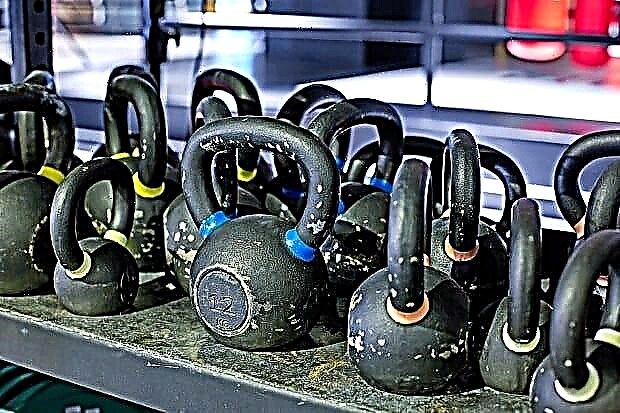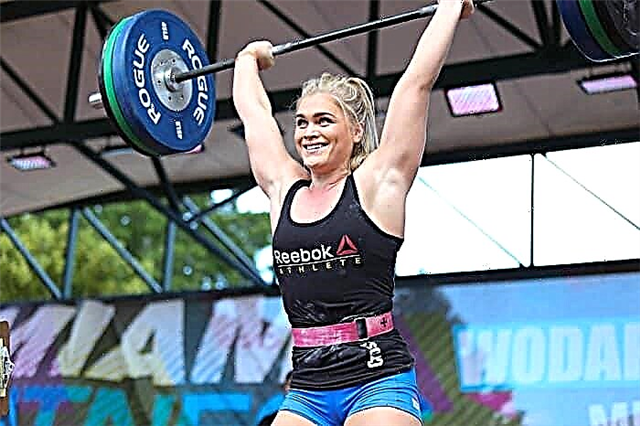Shuttle running is a type of cardio exercise, widespread throughout the world, aimed at developing the speed-strength qualities of an athlete. When performing a shuttle run, the athlete must run the same distance in forward and reverse directions several times, turning 180 degrees at the end point of the distance. The most popular among athletes is the shuttle running technique 10x10, 3x10.
Benefit
This training method is useful in that it helps to increase the explosive strength of the leg muscles, improve the functioning of the entire cardiovascular system, develop coordination and strength endurance. The shuttle running standards are used to assess the physical fitness of not only athletes, but also employees of various power structures.
Usually shuttle running is carried out for short distances from 10 to 30 meters, but in rare cases the distance can reach 100 meters. Due to its versatile benefits, this exercise has gained popularity in fitness, crossfit, various martial arts, and is also included in the compulsory physical training program in schools, specialized academies under government agencies and in the Armed Forces of the Russian Federation.
Today we will figure out how to properly run shuttle run, as well as what is the practical benefit of this exercise on the human body from the point of view of the all-round development of an athlete.
Exercise technique
The shuttle run technique has several varieties, the choice of which depends on the distance over which the shuttle run is performed: 10x10, 3x10, 4x9. However, at your discretion, you can increase the distance several times - be guided by your level of physical fitness and well-being.
Either way, the shuttle running technique is almost the same for any distance. The only factor that should be taken into account is that in sprinting, the athlete immediately begins to perform the exercise with the greatest intensity, using all his power potential; with a longer shuttle run (for example, 10x10 or 4x100), the first 4-6 segments should be performed at the usual pace, trying not to expend a lot of energy so as not to be exhausted ahead of time. It is better to leave for the last part of the speed-power resources of your body in order to overcome the required distance in the shortest possible time period and show a truly outstanding result.
The exercise should be performed as follows:
Initial position
Classic starting position: put the supporting leg forward, trying to keep the whole center of gravity above it. The quadriceps of the supporting leg is tense, like a spring, the body is tilted slightly forward, the back is straight, we keep our hands at the level of the ribs. The start should be as explosive and fast as possible in order to overcome the first segment in the shortest time. We need strong and well-developed legs for a really explosive start, so pay more attention to exercises that develop explosive strength of the quadriceps: squats with a barbell with a pause at the bottom, deadlifts for sumo, box jumps, squat jumps, etc.
Another option for the starting position is a low start:

© Daxiao Productions - stock.adobe.com
Running speed
During the race itself, we need maximum speed. To do this, after each step, you should land not on your entire foot, but only on your toe. To develop this skill, replace your standard cardio with jumping rope, then the Lisfranc joint will adapt to the constant landing on the toes, and shuttle running will be much easier.

© Daxiao Productions - stock.adobe.com
Reversal
At the end of each segment, you need to make a 180-degree turn. To do this, you need to sharply reduce the speed and take a stopping step, turning the foot of the front leg 90 degrees in the direction of the turn - this movement will slow you down, but will not completely extinguish inertia.

© Daxiao Productions - stock.adobe.com
Acceleration
On the last stretch, you need to squeeze the maximum possible out of your body and make the last explosive acceleration, without thinking that you will need to stop soon, you should continue to increase speed right to the finish line.
You can see a video of the shuttle run below. It very clearly shows the technique of performing shuttle running:
Typical mistakes
When learning the 10x10 shuttle run technique, many aspiring athletes face the following challenges that prevent them from getting the most out of this exercise:
- Incorrect load distribution. If you are shuttling 10 equal lengths, endurance usually comes to an end after the first half. To avoid this, you need to start running with medium intensity, with each segment trying to increase speed, using the explosive power of the leg muscles.
- The load volume is too large. Don't overdo your training volume when it comes to this type of high-intensity cardio, especially if you suffer from a variety of cardiovascular diseases. Most likely, YOU will receive more harm than good.
- Too slow to stop before turning. You do not need to reduce the running speed in order to calmly turn around, you need to turn around in one movement, sharply turning your leg 90 degrees - this way you will retain the force of inertia and will not extinguish the speed to zero.
- Wrong breathing rate. During the shuttle run, breathe in a 2-2 mode, taking two steps during inhalation and two steps during exhalation. Breathe only through the nose.
- Do not forget to warm up properly, as shuttle running involves a huge number of muscles, joints and ligaments involved.

© Daxiao Productions - stock.adobe.com
Training program
This shuttle running program is designed for beginners who are just getting started with this exercise. It has only 6 workouts, between which you should take a break of 2-3 days so that the body has time to replenish energy costs. However, by repeating it several times, you can significantly improve your maximum shuttle result. These workouts are best done in a running stadium or in a track and field gym. There you can accurately measure the required distance.
| Workout number: | Number of approaches and required distance: |
| 1 | Do the 4x9 shuttle run three times. |
| 2 | Run a 4x9 race five times. |
| 3 | Run a 4x15 race three times. |
| 4 | Run a 4x15 race five times. |
| 5 | Run a 4x20 race three times. |
| 6 | Run a 10x10 race once. |
Shuttle speed 10x10
The shuttle run is part of the mandatory physical training program for the military in various units. The table below shows the current standards in force for the military, contracted employees, and the military from special forces, approved by orders of the Ministry of Internal Affairs of the Russian Federation.
Contractors | Men | Women | ||
| Up to 30 years | Over 30 years old | Under 25 | Over 25 years old | |
| 28.5 sec. | 29.5 sec. | 38 sec. | 39 sec. | |
| Special Forces | 25 sec. | – | ||
Shuttle run 3x10
The standards for students (boys and girls) are presented below. You can download and print the table using the link.
| Age | CS development level | ||||
|---|---|---|---|---|---|
| low | below the average | middle | above the average | tall | |
Boys | |||||
| 7 | 11.2 and more | 11,1-10,9 | 10,8-10,3 | 10,2-10,0 | 9,9 |
| 8 | 11,4 –//– | 10,3-10,1 | 10,0-9,5 | 9,4-9,2 | 9,1 –//– |
| 9 | 10,4 –//– | 10,3-10,0 | 9,9-9,3 | 9,2-8,9 | 8,8 –//– |
| 10 | 9,9 –//– | 9,8-9,6 | 9,5-9,0 | 8,9-8,7 | 8,6 –//– |
| 11 | 9,7 –//– | 9,6-9,4 | 9,3-8,8 | 8,7-8,5 | 8,4 –//– |
| 12 | 9,22 –//– | 9,1-9,0 | 8,99-8,5 | 8,4-8,3 | 8,2 –//– |
| 13 | 9,3 –//– | 9,2-9,1 | 9,0-8,5 | 8,4-8,3 | 8,2 –//– |
| 14 | 9,0 –//– | 8,9-8,7 | 8,6-8,1 | 8,0-7,8 | 7,7 –//– |
| 15 | 8,5 –//– | 8,4-8,3 | 8,2-7,9 | 7,8-7,7 | 7,6 –//– |
| 16 | 8,1 –//– | 8,0-7,9 | 7,9-7,5 | 7,4-7,3 | 7,2 –//– |
| 17 | 8,5 –//– | 8,4-8,2 | 8,1-7,6 | 7,5-7,3 | 7,2 –//– |
Girls | |||||
| 7 | 11.7 and more | 11,6-11,4 | 11,3-10,6 | 10,5-10,3 | 10,2 |
| 8 | 11,2 –//– | 11,1-10,8 | 10,7-10,1 | 10,0-9,8 | 9,7 –//– |
| 9 | 10,8 –//– | 10,7-10,4 | 10,3-9,7 | 9,6-9,4 | 9,3 –//– |
| 10 | 10,4 –//– | 10,3-10,1 | 10,0-9,5 | 9,4-9,2 | 9,1 –//– |
| 11 | 10,1 –//– | 10,0-9,8 | 9,7-9,1 | 9,0-8,8 | 8,7 –//– |
| 12 | 10,0 –//– | 9,9-9,7 | 9,6-9,1 | 9,0-8,8 | 8,7 –//– |
| 13 | 10,0 –//– | 9,9-9,7 | 9,6-9,0 | 8,9-8,7 | 8,6 –//– |
| 14 | 9,9 –//– | 9,8-9,6 | 9,5-8,9 | 8,8-8,6 | 8,5 –//– |
| 15 | 9,7 –//– | 9,6-9,4 | 9,3-8,8 | 8,7-8,5 | 8,4 –//– |
| 16 | 9,5 –//– | 9,4-9,2 | 9,1-8,4 | 8,6-8,5 | 8,4 –//– |
| 17 | 9,7 –//– | 9,6-9,4 | 9,3-9,1 | 9,0-8,8 | 8,7 –//– |
Crossfit complexes with shuttle running
If your training process began to bore you, try to perform several functional complexes from the table below. This will bring something new to your program and diversify the entire training. The complexes are designed for fairly experienced athletes with good strength endurance, since a beginner simply cannot cope with such a combination of aerobic and anaerobic loads, and even in such a huge volume.
| Kit-kat | Perform 60 pull-ups, 60 sit-ups, 15 push-ups, 50 push-ups, shuttle run 10x10. There are 3 rounds in total. |
| Lira | Perform a shuttle run 6x10 and 15 burpees. Only 10 rounds. |
| Maraphon | Run a 250m run, 5 pull-ups, 10 push-ups, 5 hang raises, and a 4x10 shuttle run. 4 rounds in total. |
| Ralph | Perform 10 classic deadlifts, 10 burpees, and a 6x10 shuttle run. There are 3 rounds in total. |
| Bodyguard | Perform a 4x10 shuttle run, 40 double rope jumps, 30 push-ups and 30 jump squats. There are 3 rounds in total. |
Sometimes, in order to diversify the exercise, shuttle running is practiced with carrying 2-3 objects.









